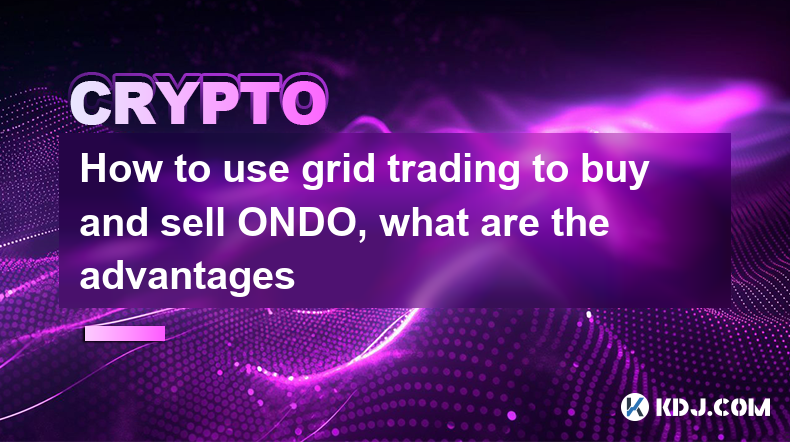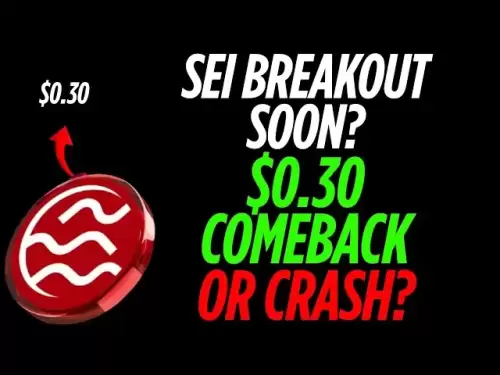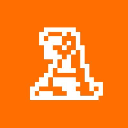-
 Bitcoin
Bitcoin $109,583.2239
0.19% -
 Ethereum
Ethereum $2,583.4612
0.48% -
 Tether USDt
Tether USDt $1.0003
-0.04% -
 XRP
XRP $2.2681
0.70% -
 BNB
BNB $659.9218
-0.52% -
 Solana
Solana $151.4961
-0.37% -
 USDC
USDC $0.9999
-0.02% -
 TRON
TRON $0.2861
1.20% -
 Dogecoin
Dogecoin $0.1718
0.04% -
 Cardano
Cardano $0.5960
-0.07% -
 Hyperliquid
Hyperliquid $40.1233
2.85% -
 Sui
Sui $2.9974
2.48% -
 Bitcoin Cash
Bitcoin Cash $497.1279
-1.76% -
 Chainlink
Chainlink $13.7275
-0.22% -
 UNUS SED LEO
UNUS SED LEO $9.0241
0.70% -
 Avalanche
Avalanche $18.5536
-0.88% -
 Stellar
Stellar $0.2421
1.39% -
 Toncoin
Toncoin $2.8593
-0.51% -
 Shiba Inu
Shiba Inu $0.0...01187
-0.07% -
 Litecoin
Litecoin $90.0023
2.90% -
 Hedera
Hedera $0.1590
2.79% -
 Monero
Monero $322.1495
0.00% -
 Polkadot
Polkadot $3.5453
-1.00% -
 Dai
Dai $1.0000
-0.01% -
 Bitget Token
Bitget Token $4.5733
-1.06% -
 Ethena USDe
Ethena USDe $1.0002
-0.01% -
 Uniswap
Uniswap $7.6345
3.03% -
 Aave
Aave $279.2583
0.47% -
 Pepe
Pepe $0.0...01003
-1.52% -
 Pi
Pi $0.4941
-0.32%
How to use grid trading to buy and sell ONDO, what are the advantages
Grid trading automates buying and selling ONDO within set price ranges, capitalizing on volatility for consistent profits while managing risk effectively.
May 02, 2025 at 04:49 pm

Grid trading is a popular strategy among cryptocurrency traders, particularly for assets like ONDO, which can experience significant price volatility. This method involves setting up a series of buy and sell orders at predetermined price levels, creating a 'grid' that allows traders to capitalize on price movements within a specific range. In this article, we will explore how to use grid trading to buy and sell ONDO, as well as the advantages this strategy offers.
Setting Up a Grid Trading Strategy for ONDO
To begin using grid trading for ONDO, you need to select a suitable trading platform that supports this strategy. Many cryptocurrency exchanges, such as Binance and KuCoin, offer grid trading bots that can automate the process. Here's how to set up a grid trading strategy for ONDO:
Choose a Trading Platform: Select a platform that supports grid trading and offers ONDO trading pairs. Ensure the platform is reputable and has a user-friendly interface.
Determine the Price Range: Analyze the recent price movements of ONDO to set an upper and lower price limit for your grid. For example, if ONDO is currently trading at $1.00, you might set your grid to operate between $0.90 and $1.10.
Set the Number of Grids: Decide how many price levels you want within your grid. A higher number of grids can increase potential profits but also increases the risk. For instance, you might choose to have 10 grids, meaning you will have 10 buy and 10 sell orders.
Configure the Grid: Use the platform's grid trading tool to set up your buy and sell orders. For a grid between $0.90 and $1.10 with 10 grids, your buy orders might be at $0.91, $0.92, $0.93, and so on, up to $0.99. Your sell orders would be at $1.01, $1.02, $1.03, and so on, up to $1.09.
Monitor and Adjust: Once your grid is set up, monitor its performance. You may need to adjust the grid based on market conditions or if ONDO's price moves outside your set range.
Advantages of Grid Trading for ONDO
Grid trading offers several advantages when trading ONDO, making it an attractive strategy for both novice and experienced traders.
Automated Trading: One of the primary benefits of grid trading is that it can be fully automated. Once you set up your grid, the trading bot will execute buy and sell orders based on your parameters, allowing you to trade ONDO without constant monitoring.
Profit from Volatility: ONDO, like many cryptocurrencies, can be highly volatile. Grid trading allows you to profit from these price fluctuations by buying low and selling high within your set grid. This can lead to consistent profits even in a sideways market.
Risk Management: By setting a clear price range and number of grids, you can manage your risk more effectively. You know exactly how much you stand to gain or lose within the grid, which can help you make more informed trading decisions.
Flexibility: Grid trading is highly flexible. You can adjust the price range, number of grids, and other parameters based on your trading strategy and market conditions. This allows you to tailor your approach to ONDO's specific price movements.
Implementing Grid Trading on Binance
Binance is one of the most popular platforms for grid trading ONDO. Here's a detailed guide on how to set up a grid trading strategy on Binance:
Log into Binance: Access your Binance account and navigate to the trading section.
Select Grid Trading: Go to the 'Trading Bots' section and select 'Grid Trading'.
Choose ONDO Trading Pair: Select the ONDO trading pair you want to use, such as ONDO/USDT.
Set Up the Grid: Enter the upper and lower price limits for your grid. For example, if ONDO is trading at $1.00, you might set the upper limit at $1.10 and the lower limit at $0.90.
Define the Number of Grids: Decide on the number of grids you want. For instance, you might choose 10 grids.
Set the Investment Amount: Enter the amount of ONDO or USDT you want to invest in the grid.
Review and Confirm: Review your grid settings and confirm the setup. The grid trading bot will now automatically execute buy and sell orders based on your parameters.
Monitoring and Adjusting Your Grid
Once your grid is set up, it's important to monitor its performance and make adjustments as needed. Here are some tips for monitoring and adjusting your ONDO grid trading strategy:
Check Performance Regularly: Regularly review the performance of your grid to see if it's generating profits or if adjustments are needed.
Adjust the Grid: If ONDO's price moves significantly outside your set range, you may need to adjust the upper and lower limits of your grid. For example, if ONDO's price rises to $1.20, you might adjust your upper limit to $1.30.
Reinvest Profits: Consider reinvesting any profits back into the grid to increase your potential returns.
Stay Informed: Keep up with market news and ONDO-specific developments that could impact its price. This can help you make more informed decisions about adjusting your grid.
Potential Risks and Considerations
While grid trading offers many advantages, it's important to be aware of potential risks and considerations when using this strategy for ONDO.
Market Risk: If ONDO's price moves significantly outside your grid's range, you may miss out on potential profits or incur losses.
Fees: Grid trading can involve multiple buy and sell orders, which can lead to higher trading fees. Be sure to factor these into your strategy.
Complexity: Setting up and managing a grid trading strategy can be complex, especially for beginners. Take the time to understand the strategy and practice with smaller amounts before investing larger sums.
Over-Optimization: Be cautious of over-optimizing your grid based on past price data. Market conditions can change, and what worked in the past may not work in the future.
FAQs
Q: Can I use grid trading for other cryptocurrencies besides ONDO?
A: Yes, grid trading can be used for any cryptocurrency that is supported by the trading platform you are using. The strategy is particularly effective for assets with high volatility.
Q: How much capital do I need to start grid trading ONDO?
A: The amount of capital needed depends on your trading strategy and the platform's minimum investment requirements. It's advisable to start with a smaller amount to gain experience before investing larger sums.
Q: Is grid trading suitable for long-term holding of ONDO?
A: Grid trading is typically used for short to medium-term trading strategies. If you are looking to hold ONDO for the long term, other strategies such as dollar-cost averaging might be more suitable.
Q: Can I combine grid trading with other trading strategies for ONDO?
A: Yes, you can combine grid trading with other strategies, such as trend following or scalping, to diversify your approach and potentially increase your profits. However, be mindful of the increased complexity and risk.
Disclaimer:info@kdj.com
The information provided is not trading advice. kdj.com does not assume any responsibility for any investments made based on the information provided in this article. Cryptocurrencies are highly volatile and it is highly recommended that you invest with caution after thorough research!
If you believe that the content used on this website infringes your copyright, please contact us immediately (info@kdj.com) and we will delete it promptly.
- House, Trump Bill, Bitcoin Rally: A New York Minute on Macro and Crypto
- 2025-07-04 10:30:12
- Coin Master Free Spins: Your Daily Dose of Links (July 2025)
- 2025-07-04 10:50:12
- Crypto's Dual Lifeline: Bitcoin ETFs Soar as Stablecoins Bolster US Treasuries
- 2025-07-04 10:30:12
- Altcoins in July 2025: Market Momentum and Top Picks
- 2025-07-04 11:10:12
- Qubetics Price Prediction: Analysts See $10-$15 in 2026 - Is It Just Hype?
- 2025-07-04 10:35:12
- LILPEPE: The Meme Coin Primed for Explosive Growth with Blockchain Tech
- 2025-07-04 08:50:13
Related knowledge

How to customize USDT TRC20 mining fees? Flexible adjustment tutorial
Jun 13,2025 at 01:42am
Understanding USDT TRC20 Mining FeesMining fees on the TRON (TRC20) network are essential for processing transactions. Unlike Bitcoin or Ethereum, where miners directly validate transactions, TRON uses a delegated proof-of-stake (DPoS) mechanism. However, users still need to pay bandwidth and energy fees, which are collectively referred to as 'mining fe...

USDT TRC20 transaction is stuck? Solution summary
Jun 14,2025 at 11:15pm
Understanding USDT TRC20 TransactionsWhen users mention that a USDT TRC20 transaction is stuck, they typically refer to a situation where the transfer of Tether (USDT) on the TRON blockchain has not been confirmed for an extended period. This issue may arise due to various reasons such as network congestion, insufficient transaction fees, or wallet-rela...

How to cancel USDT TRC20 unconfirmed transactions? Operation guide
Jun 13,2025 at 11:01pm
Understanding USDT TRC20 Unconfirmed TransactionsWhen dealing with USDT TRC20 transactions, it’s crucial to understand what an unconfirmed transaction means. An unconfirmed transaction is one that has been broadcasted to the blockchain network but hasn’t yet been included in a block. This typically occurs due to low transaction fees or network congestio...

How to check USDT TRC20 balance? Introduction to multiple query methods
Jun 21,2025 at 02:42am
Understanding USDT TRC20 and Its ImportanceUSDT (Tether) is one of the most widely used stablecoins in the cryptocurrency market. It exists on multiple blockchain networks, including TRC20, which operates on the Tron (TRX) network. Checking your USDT TRC20 balance accurately is crucial for users who hold or transact with this asset. Whether you're sendi...

What to do if USDT TRC20 transfers are congested? Speed up trading skills
Jun 13,2025 at 09:56am
Understanding USDT TRC20 Transfer CongestionWhen transferring USDT TRC20, users may occasionally experience delays or congestion. This typically occurs due to network overload on the TRON blockchain, which hosts the TRC20 version of Tether. Unlike the ERC20 variant (which runs on Ethereum), TRC20 transactions are generally faster and cheaper, but during...

The relationship between USDT TRC20 and TRON chain: technical background analysis
Jun 12,2025 at 01:28pm
What is USDT TRC20?USDT TRC20 refers to the Tether (USDT) token issued on the TRON blockchain using the TRC-20 standard. Unlike the more commonly known ERC-20 version of USDT (which runs on Ethereum), the TRC-20 variant leverages the TRON network's infrastructure for faster and cheaper transactions. The emergence of this version came as part of Tether’s...

How to customize USDT TRC20 mining fees? Flexible adjustment tutorial
Jun 13,2025 at 01:42am
Understanding USDT TRC20 Mining FeesMining fees on the TRON (TRC20) network are essential for processing transactions. Unlike Bitcoin or Ethereum, where miners directly validate transactions, TRON uses a delegated proof-of-stake (DPoS) mechanism. However, users still need to pay bandwidth and energy fees, which are collectively referred to as 'mining fe...

USDT TRC20 transaction is stuck? Solution summary
Jun 14,2025 at 11:15pm
Understanding USDT TRC20 TransactionsWhen users mention that a USDT TRC20 transaction is stuck, they typically refer to a situation where the transfer of Tether (USDT) on the TRON blockchain has not been confirmed for an extended period. This issue may arise due to various reasons such as network congestion, insufficient transaction fees, or wallet-rela...

How to cancel USDT TRC20 unconfirmed transactions? Operation guide
Jun 13,2025 at 11:01pm
Understanding USDT TRC20 Unconfirmed TransactionsWhen dealing with USDT TRC20 transactions, it’s crucial to understand what an unconfirmed transaction means. An unconfirmed transaction is one that has been broadcasted to the blockchain network but hasn’t yet been included in a block. This typically occurs due to low transaction fees or network congestio...

How to check USDT TRC20 balance? Introduction to multiple query methods
Jun 21,2025 at 02:42am
Understanding USDT TRC20 and Its ImportanceUSDT (Tether) is one of the most widely used stablecoins in the cryptocurrency market. It exists on multiple blockchain networks, including TRC20, which operates on the Tron (TRX) network. Checking your USDT TRC20 balance accurately is crucial for users who hold or transact with this asset. Whether you're sendi...

What to do if USDT TRC20 transfers are congested? Speed up trading skills
Jun 13,2025 at 09:56am
Understanding USDT TRC20 Transfer CongestionWhen transferring USDT TRC20, users may occasionally experience delays or congestion. This typically occurs due to network overload on the TRON blockchain, which hosts the TRC20 version of Tether. Unlike the ERC20 variant (which runs on Ethereum), TRC20 transactions are generally faster and cheaper, but during...

The relationship between USDT TRC20 and TRON chain: technical background analysis
Jun 12,2025 at 01:28pm
What is USDT TRC20?USDT TRC20 refers to the Tether (USDT) token issued on the TRON blockchain using the TRC-20 standard. Unlike the more commonly known ERC-20 version of USDT (which runs on Ethereum), the TRC-20 variant leverages the TRON network's infrastructure for faster and cheaper transactions. The emergence of this version came as part of Tether’s...
See all articles

























































































